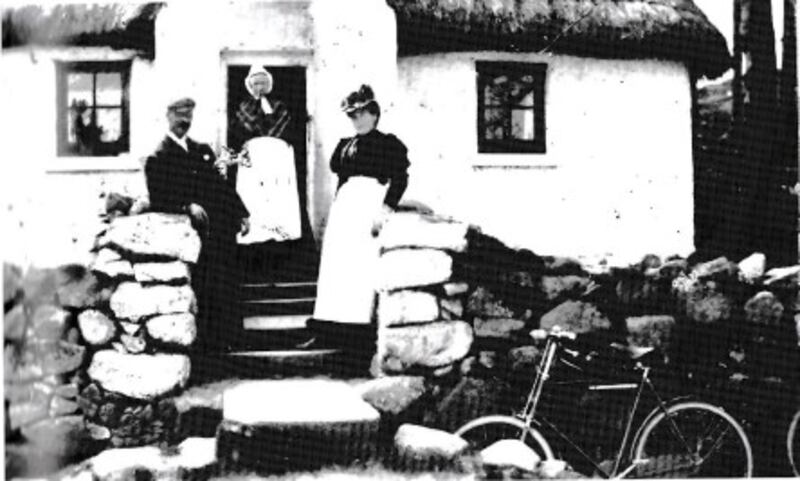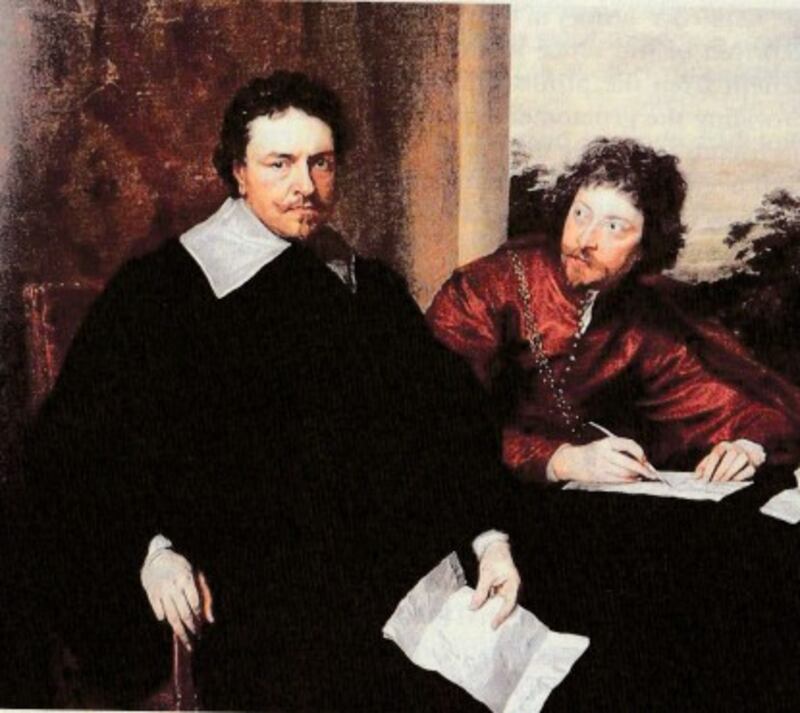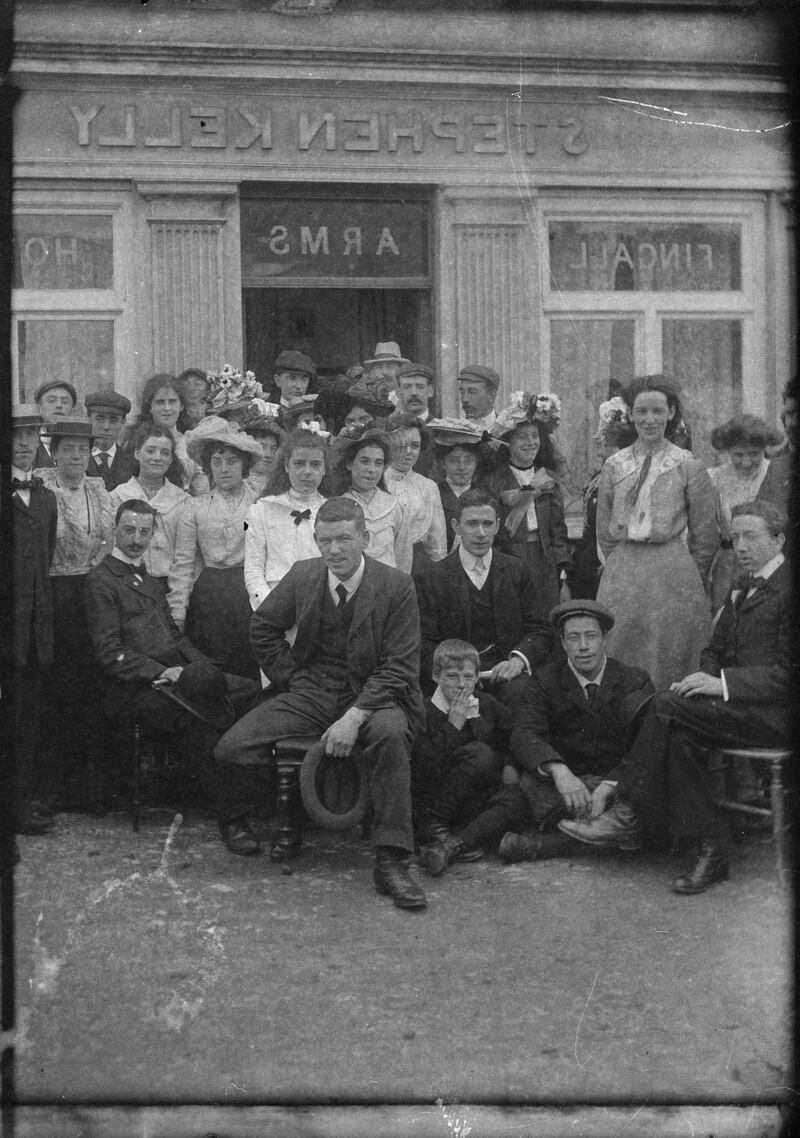Michael Fewer writes refreshingly unpredictable books and his new one about a tea house in the Wicklow hills is no exception. He has delved into eight dusty visitors’ books for Tales from a Wicklow Tea Room: 1898-1960 (Beehive, €24.99) and discusses the lives of guests who signed them. The tea house was run by the McGuirk family who kept hens, geese and beehives, and were renowned for their homemade bread and cakes, boiled eggs and their hospitality. Early excursionists came by horse and trap, on foot, bicycle, charabanc outings, and by motorbike with sidecars.

The author’s sleuth-like biographical research in which he deciphers copperplate handwriting, brings together those who frequented McGuirk’s, placing them in the context of a 62-year timespan. A lively place with a turf fire, the tea room attracted medics, scientists, artists, writers and soldiers. In August 1916, Maj Harold Heathcote enjoyed tea there with his wife. Four months earlier, he was the British officer in charge of executing Patrick Pearse, James Connolly and others after the Easter Rising. John Patrick McEnroe, whose brother emigrated to New York from Ballyjamesduff, was the grand-uncle of the renowned tennis player, while the young Samuel Beckett was taken to the tea room by his father, William, in 1899.
The epitome of energetic local history, the book curates and enlarges moments of time through a cast of fascinating names and stories, woven skilfully together into a sociological context. Visitor comments in the entries are a mix of the frivolous, funny, political and sarcastic, with one writer even moved to pen doggerel: ‘Mary had a little bear / To which she was very kind / And every place that Mary went / You could see her bear behind.’

Another historiographical aspect of Wicklow life is dealt with in No Mere Irish: The Kennedys of Mount Kennedy (Wordwell, €25) by Therese Hicks. The author recounts the story of one family from Co Wicklow, recouping little-known local history from this period. Her quest leads to an exploration of the estate papers of the Kennedys, an ambitious family who amassed wealth. They established a manor, becoming Protestant for strategic reasons, most likely in the late 1590s, throwing in their lot with English adventurers.
READ MORE
Six chapters consider the privileges and pitfalls they faced, the twists and turns of a chaotic century, and their rise to power accompanied by an enhanced social standing. Robert Kennedy got his start in Dublin and his network evolved, allowing him to build a secure base to increase his affluence and ultimately gain a large amount of land in Wicklow in the 1620s and 1630s. The author states that the late 16th century and early decades of the 17th saw “a Wild West show” of land-grabbing from the Gaelic clans.
The Kennedys’ story is filled with the promise of riches, but also of danger and ill-luck. Robert Kennedy’s wife died in childbirth and he also died young. The estate was left at the mercy of uninterested parties, and because his sons lacked the ability required to survive the political and social gauntlets, the estate was sold. The remaining baronet turned his back on the family’s lifestyle and sought to live honourably, not only as a Catholic but also as a Benedictine priest.
[ Compelling local history emerges across five excellent readsOpens in new window ]
Most people who know the Flaggy Shore at New Quay in the Burren will be aware of Seamus Heaney’s Postscript poem. But few may have seen the memorial on a hexagonal stone tablet celebrating the work of a 13th-century Irish poet, Donnchada O’Dalaigh, which stated him to be, “A poet who was and never will be surpassed.” This is just one of the fascinating secrets of this narrow spit of shoreline north of Bell Harbour captured in Kathleen Fawle’s The History of New Quay in 12 Tales (£12.99).
Contrasting chapters discuss the lives of the ruling elite – the Skerrett family of Finavarra – and the sad state of the 19th-century poor. During the Great Famine of the 1840s more than 350 people gathered in the area demanding work so they could provide food for their starving families. Other subjects consider sea trade, fishing and the famed Red Bank oyster industry which led to much-needed employment. A secret society, the Terry Alts, was active in rural communities of Clare until 1831, and took on the forces of the crown on the summit of Lisovane Hill. The society was formed to fight against unjust rent, clearances, access to common land and payment of tithes for the upkeep of the Church of Ireland.
Folklore was an intrinsic part of the lives of people in the Burren and it was embraced by one of the best-known figures connected to the area, Lady Augusta Gregory, who frequented the Flaggy Shore as a summer visitor. In 1897 she rented Harbour Hill House and in 1912 bought Mount Vernon. Her imagination was caught by the landscape, the lives of people and the words they used to describe their beliefs. She collected tales of fairies and banshees, and was friendly with a one-eyed fisherman, Martin Minogue, whose poetic turn of phrase and exaggerated stories of ghosts and ring forts enthralled her.

Peadar Murray’s Photographs (€15), compiled by his grandson Daithí Ó Muiri, opens a window on little-known aspects of life in Co Meath. From 1896 Murray ran a general store and was a publican, draper, cycle salesman and hardware merchant in Dunshaughlin. He was also a Gaelic League activist and writer, but his passion was photography and he was one of first people in the area to own a camera, developing photographs and an interest in different techniques.
[ Living in walkable neighbourhoods such as Ranelagh or Salthill makes us happierOpens in new window ]
Murray’s emphasis was firmly on local people and place. As part of the St Patrick’s Day celebrations in Trim in 1904, he showed views of the ancient ruins of Meath from surrounding towns. He also travelled widely throughout Ireland. One of his longest journeys was the 170-mile trek on a heavy steel-framed bicycle along poorly surfaced roads to record the 1902 International Exhibition in Cork.
Want to know where you can find the Pillar of Salt in Cork, what the purpose of a clapper bridge is or where florescent algae creates bioluminescence? Then you should buy a copy of The A-Z of Curious County Cork (History Press, £14.99) by the Lord Mayor of Cork Kieran McCarthy, and find out the answers. His enthusiasm and erudition suffuses his latest book which shows parts of Cork that few outsiders will know. An omnium gatherum of mysteries, crimes, quick-fire eccentricities and historic curiosities, the book is a magpie’s nest with delightful quotations, anecdotes and sketches.













